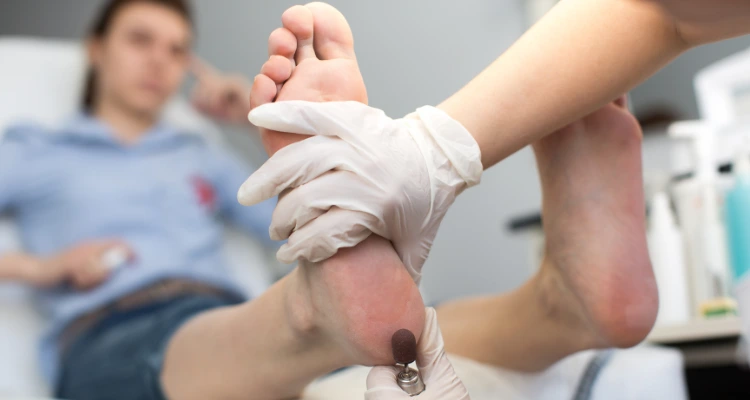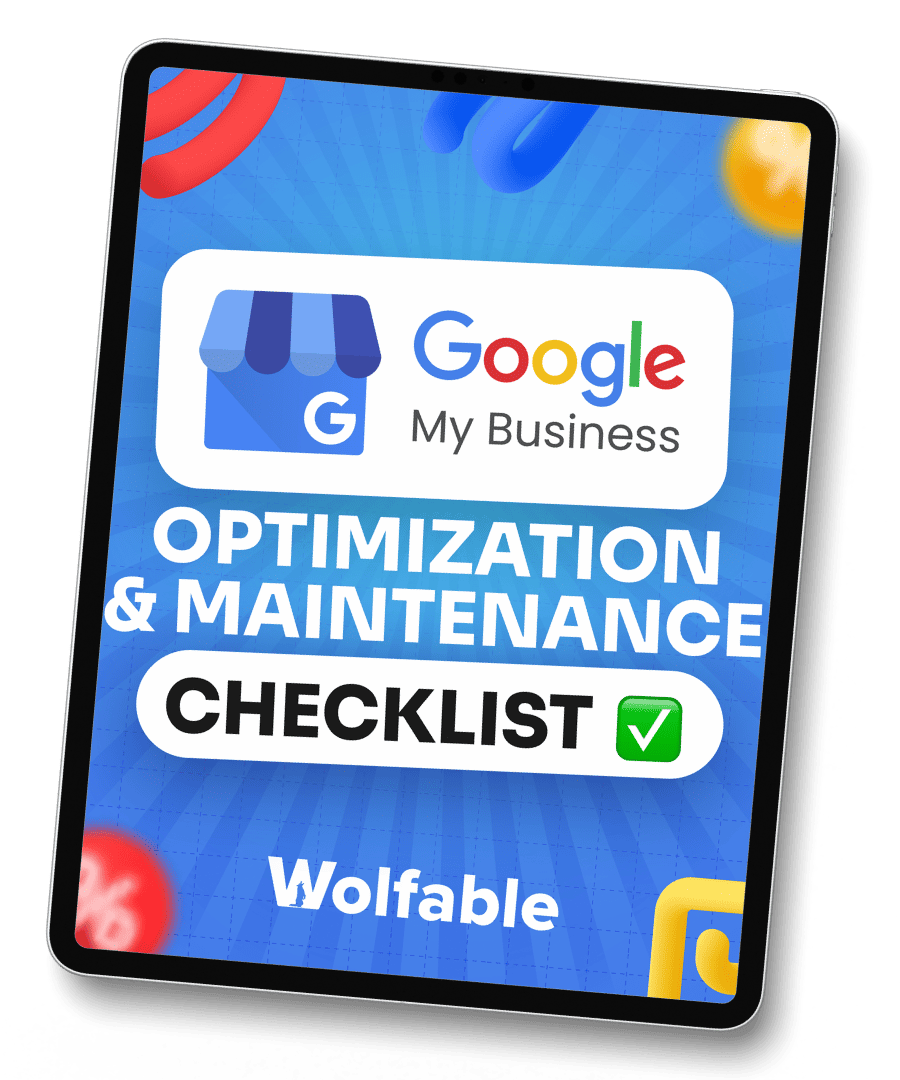Wraps up in 9 Minutes
Introduction
Digital marketing has become a game-changer for podiatrists looking to grow in a competitive healthcare landscape. With over 77% of patients searching online for healthcare providers, having a robust online presence is no longer optional. Podiatrists who leverage digital strategies can attract more patients, educate their audience, and build trust effectively.
In today’s fast-paced world, patients expect convenience and accessibility, especially when seeking foot and ankle care. By utilizing digital platforms, podiatrists can offer personalized solutions, streamline appointment bookings, and address patient concerns quickly. This not only enhances patient experience but also boosts practice visibility in a crowded market.
Moreover, targeted digital campaigns help podiatrists reach local audiences who are actively searching for treatments like bunion correction, plantar fasciitis care, or custom orthotics. With the right mix of SEO, social media, and content marketing, podiatry practices can position themselves as trusted healthcare providers while driving long-term growth.
Understanding Podiatry Digital Marketing
Podiatry digital marketing focuses on specific treatments such as bunions, heel pain, and sports injuries. This niche marketing ensures podiatrists attract patients actively seeking specialized care. With 71% of patients choosing healthcare providers based on online research, targeted digital marketing is essential for podiatrist practices. Specialized ads and search engine optimization (SEO) help podiatrists stand out in local markets.
- What sets podiatry marketing apart from general healthcare marketing?
Podiatry marketing stands apart because it targets a specialized patient base seeking treatments for specific foot and ankle conditions. Unlike general healthcare marketing, which covers broad medical services, podiatry marketing focuses on conditions like bunions, plantar fasciitis, and diabetic foot care. It also involves highly targeted, localized campaigns to ensure podiatrists are visible to patients in their specific geographic area.
Moreover, podiatrists must use specialized keywords for SEO that are directly related to foot health issues. This ensures they show up when patients search for treatments like heel pain relief or foot surgery. By customizing their marketing efforts to these niche needs, podiatrists can effectively connect with the right patients.
- Overview of patient-centric marketing for podiatrists
Patient-centric marketing provides personalized content to address patient needs. For podiatrists, offering educational content on conditions like plantar fasciitis can attract more qualified leads. 88% of patients are likely to book an appointment after reading customized, patient-focused content. Additionally, easy online booking and appointment reminders can improve patient retention and satisfaction.

Key Trends in Podiatry Digital Marketing
Digital marketing for podiatrists is evolving with key trends that enhance patient engagement and boost practice visibility. From telemedicine integration to the dominance of local SEO, these trends are reshaping how podiatrists connect with patients. Embracing these strategies ensures podiatrists stay competitive and build trust in an increasingly digital healthcare landscape.
- Telemedicine and its integration into podiatry practices.
Telemedicine has gained popularity, especially in podiatry, where virtual consultations can help patients with routine foot care or post-operative follow-ups. 56% of patients are now open to telemedicine for their healthcare needs. By offering telemedicine options, podiatrists can attract patients who may not be able to visit in person due to distance or mobility issues, expanding their patient base. - Local SEO dominance for location-based healthcare services.
Local SEO is crucial for podiatrists since most patients search for nearby providers. With 97% of patients using the internet to find healthcare services, optimizing a podiatrist’s website for local searches ensures better visibility in Google results. By using location-based keywords such as “podiatrists near me” or “foot specialist in [city]”, podiatrists can significantly boost local traffic and attract more patients seeking foot care services in their area. - Video content for patient education and treatment demonstrations.
Video marketing is becoming an essential tool for podiatrists to explain complex conditions like plantar fasciitis or bunion surgery. Studies show that 60% of patients are more likely to choose a healthcare provider after watching an informative video. Podiatrists can create short treatment demos, patient testimonials, or educational videos to build trust and help patients feel more comfortable before booking an appointment. - HIPAA Compliance: Importance of protecting patient data online.
As digital marketing expands, podiatrists must ensure HIPAA compliance to protect patient data when interacting online. Healthcare providers must use secure platforms for online bookings, emails, and telemedicine services. A breach of HIPAA can result in significant fines and damage to a podiatrist’s reputation. Ensuring HIPAA-compliant practices in all digital interactions not only builds trust but also keeps the practice legally safe.
Effective Strategies for Digital Marketing for Podiatrists
In today’s digital age, implementing effective digital marketing strategies for podiatrists requires a well-planned and comprehensive approach. These strategies help podiatrists build a strong online presence while maintaining patient trust and adhering to industry standards.
Let’s explore each crucial component of a successful digital marketing strategy customized for podiatrists.
1. Setting the Foundation
- Define clear marketing objectives:
For podiatrists, clear marketing objectives are crucial for success. Whether the goal is patient acquisition, improving patient retention, or building a stronger brand presence, having defined objectives helps streamline efforts. For example, focusing on SEO for local searches can enhance visibility and attract new patients, while email campaigns can nurture long-term relationships with existing patients. - Conduct a competitive analysis in your local market.
Conducting a competitive analysis helps podiatrists understand their market position and identify opportunities for growth. By researching local competitors, podiatrists can assess their strengths and weaknesses, allowing them to differentiate themselves. 69% of patients consider online reviews when choosing a healthcare provider, so analyzing competitors' reviews can reveal what patients value the most in their podiatrist. - Understand your target audience
Understanding the demographics and pain points of your target audience is key for effective marketing. For podiatrists, this could mean focusing on specific groups, such as elderly patients who may have foot health issues or athletes suffering from shin splints. By targeting common conditions podiatrists can customize content and services to directly address patient needs and increase engagement.
2. Responsive Website Design
- Importance of mobile-friendly design in healthcare.
In today’s mobile-first world, a mobile-friendly website design is critical for podiatrists. With over 50% of healthcare-related searches happening on mobile devices, ensuring your website is optimized for mobile use can significantly improve patient engagement. A mobile-responsive website allows potential patients to easily find information and schedule appointments on-the-go, which is essential for providing top-tier service. - Fast-loading pages for seamless user experience.
Fast-loading pages are key to providing a smooth user experience for podiatry patients. Research shows that 53% of mobile users abandon websites that take longer than 3 seconds to load. By optimizing website speed, podiatrists can keep patients on their site longer and increase the likelihood of booking an appointment. Implementing strategies like compressing images or leveraging caching can drastically improve site performance.
3. Effective SEO Strategies for Podiatrists to Boost Online Visibility
- On-page SEO
On-page SEO is important for podiatrists aiming to boost their online presence. Optimizing meta titles and meta descriptions with relevant, location-based keywords like “podiatrist near me” or “best foot doctor” ensures your site is discoverable by potential patients. Proper keyword integration in headers, content, and image alt texts can help your website rank higher in search results. As Google’s algorithm continues to prioritize user intent, having clear, concise, and relevant meta data increases your chances of attracting targeted traffic and improves patient engagement. - Local SEO
Local SEO is crucial for podiatrists as most patients search for healthcare providers within their vicinity. Optimizing your Google Business Profile with accurate business details, patient reviews, and high-quality images increases your visibility in Google Maps and local search results. Additionally, claiming and updating your practice’s information across local directories like Yelp and Healthgrades ensures consistency in your NAP (Name, Address, Phone) details, which helps in boosting rankings. With 46% of searches on Google being for local services, ensuring your practice is properly listed increases your chances of being found by potential patients in your area. - Technical SEO
Technical SEO is essential for improving your website’s functionality and user experience, which ultimately impacts your search rankings. For podiatrists, having a fast-loading website ensures that users don’t bounce due to slow page speeds, which can negatively affect patient retention and search engine rankings. Additionally, mobile usability is critical as more patients search for podiatric services on mobile devices—Google reports that over 60% of searches now come from mobile. Implementing schema markup on your site helps search engines understand your content better, which can lead to enhanced search results, like rich snippets, providing better visibility for your practice.
You might be interested in :
4. Content Marketing for Podiatrists
- Blogging to educate patients about foot care and treatments.
Blogging is a powerful way for podiatrists to engage with patients while educating them about foot care and available treatments. Regularly posting valuable content helps improve a podiatrist's website SEO and establishes credibility. For instance, writing about diabetic foot care or bunion treatments can attract individuals with these concerns. Blogs also address common questions, driving more traffic to the website and helping build trust with potential patients.
Example of the Blog Topics:
1. "How to Manage Diabetic Foot Care Effectively"
2. "Bunion Treatment: When to See a Podiatrist"
3. "Preventing Athlete’s Foot: Tips for Active Individuals"
- Publishing FAQs to address common concerns.
An FAQ section is an excellent resource for podiatrists looking to address the most common concerns patients may have before visiting. Including questions like "What are the benefits of podiatry for athletes?" or "How often should I get a foot check-up?" helps provide clarity and strengthens the patient's experience. FAQs are also an effective SEO tool by incorporating relevant keywords that patients frequently search for, improving search engine rankings.
Example FAQ Topics:
1. "How Can a Podiatrist Help with Heel Pain?"
2. "What Should I Expect During My First Podiatry Appointment?"
3. "Are There Non-Surgical Treatment Options for Bunions?"
- Sharing patient success stories (with permission).
Patient testimonials are a great way for podiatrists to build trust and show real-world results. Sharing success stories, with the patient’s consent, can highlight treatments for common issues such as heel pain or ingrown toenails. These stories humanize your practice and make potential patients feel more comfortable reaching out. Patient success stories on a podiatrist's website or social media pages provide both emotional appeal and social proof that your services are effective.
Example Success Story Topics:
1. "How Treatment Transformed My Heel Pain: A Patient’s Journey"
2. "From Ingrown Toenail to Recovery: Real Patient Story"
3. "How Podiatric Care Helped Me Return to Running"
- Creating downloadable resources like "Foot Care Tips for Runners."
Providing downloadable resources such as "Foot Care Tips for Runners" can be a useful way for podiatrists to offer added value to patients and prospects. These resources not only promote your expertise but also encourage email sign-ups, building your marketing list. For example, a guide on managing plantar fasciitis for athletes can capture the interest of an active, health-conscious audience while educating them about the importance of podiatric care.
Example Downloadable Resources:
1. "Foot Care Tips for Runners: Prevent Injuries and Stay Active"
2. "Plantar Fasciitis: Treatment Options and Prevention Guide"
3. "Top 10 Foot Care Tips for Senior Health"
5. Social Media Marketing for Podiatrists
- Platforms to focus on: Instagram, Facebook, and YouTube.
Social media is an essential tool for podiatrists to reach new patients and engage with existing ones. Instagram, Facebook, and YouTube are the primary platforms where healthcare professionals can showcase their expertise. Instagram allows for visually engaging posts like before-and-after photos of treatments, while Facebook helps create community interaction with posts and reviews. YouTube is ideal for sharing informative videos like foot care tutorials, expanding the practice’s online presence. - Posting educational content: foot care routines, treatment walkthroughs.
Educational content is a great way for podiatrists to provide value to their followers while establishing authority in the field. By sharing foot care routines or treatment walkthroughs, podiatrists can help educate patients on how to manage common issues like bunions or plantar fasciitis. Video tutorials or step-by-step guides can be especially effective, demonstrating how patients can care for their feet at home. This type of content not only attracts new patients but also fosters long-term relationships with current ones. - Engaging through polls, Q&A sessions, and live consultations.
Engaging directly with followers on social media helps podiatrists build trust and increase interaction with their audience. Polls and Q&A sessions allow patients to ask questions and provide valuable feedback. Live consultations can be particularly beneficial by allowing podiatrists to showcase their expertise in real time, offering personalized tips. For example, a live Q&A on Instagram can answer common questions about diabetic foot care, while a Facebook poll can gauge interest in a specific foot care topic.
6. Leveraging Video Marketing
- Using short videos to explain treatments and ease patient anxieties.
Short videos are a powerful tool for podiatrists to educate patients and ease their concerns. By creating bite-sized videos that explain common procedures, such as bunion surgeries or plantar fasciitis treatments, podiatrists can demystify the treatment process. These videos offer a personal touch and help alleviate patient anxiety by showcasing what to expect during treatment. Research shows that 64% of consumers are more likely to book an appointment after watching an informational video. - Testimonials to build credibility.
Patient testimonials are one of the most effective ways for podiatrists to build credibility. Video testimonials, in particular, provide social proof and establish trust, as potential patients are more likely to trust the experiences of others. Showcasing real patient stories can help highlight the effectiveness of treatments and build a reputation for exceptional care. Studies reveal that 92% of consumers trust reviews and testimonials as much as personal recommendations. - Behind-the-scenes videos showcase clinic culture.
Behind-the-scenes videos allow podiatrists to give patients a glimpse into the clinic’s environment and team. These videos humanize the practice and help build a connection with prospective patients. Sharing moments like team introductions, the welcoming clinic atmosphere, and staff working together fosters trust and makes patients feel more comfortable. By showcasing your clinic’s professionalism and friendliness, podiatrists can create a positive first impression that sets them apart from competitors.
7. Paid Advertising for Podiatrists
- Google Ads: Targeting location-based searches like "Podiatrist near me."
Google Ads enables podiatrists to target patients in their local area by bidding on location-based keywords like "Podiatrist near me." This increases visibility for those actively searching for foot care services in their vicinity. With nearly 46% of all Google searches being location-based, this strategy is essential for connecting with potential patients nearby. - Social Media Ads: Highlighting special offers and treatment benefits.
Social media platforms like Facebook and Instagram provide an excellent opportunity for podiatrists to highlight special offers and the benefits of specific treatments. These ads can attract new patients by showcasing services such as bunion removal or diabetic foot care, ultimately increasing both patient engagement and appointment bookings. - Retargeting campaigns for potential patients.
Retargeting allows podiatrists to re-engage visitors who previously interacted with their website but didn't book an appointment. By displaying targeted ads across platforms, podiatrists can remind potential patients of their services, increasing the likelihood of conversion and driving more appointments. Retargeting campaigns have shown how to increase conversion rates by up to 70%.
8. Improving Patient Engagement
- WhatsApp for appointment booking and follow-ups.
Using WhatsApp for appointment booking and patient follow-ups provides a convenient and instant communication channel. With 87% of consumers preferring messaging apps for customer service, podiatrists can significantly enhance patient engagement. It allows quick responses, reminders for upcoming appointments, and a personalized touch, ensuring patients feel valued and cared for. - Offering virtual consultation options.
Offering virtual consultations is increasingly important for podiatrists, as patients seek convenience and accessibility. In fact, 60% of patients are now open to virtual visits, especially for follow-up care or initial consultations. Virtual consultations allow podiatrists to provide expert advice, discuss treatment options, and engage with patients without requiring them to leave their home.
9. Email Marketing for Patient Communication
- Sending newsletters with foot care tips and treatment updates.
Regular newsletters with foot care advice and the latest treatment updates can keep patients informed and engaged. For podiatrists, this content might include tips for managing common foot conditions like bunions or diabetic foot care. Studies show that personalized, valuable content can improve patient retention by up to 20%, making newsletters a powerful tool for maintaining long-term relationships with patients. - Appointment reminders and follow-ups.
Sending automated appointment reminders via email ensures patients remember their appointments, reducing no-show rates. Podiatrists can also follow up with patients post-appointment to check on recovery or answer any lingering questions. Research shows that timely reminders can lower cancellation rates by 30%, helping maintain a steady flow of appointments and a positive patient experience. - Personalized emails for patient retention and feedback collection.
Personalized email campaigns that acknowledge individual patient needs can help strengthen retention. For example, sending a "Thank you" email after a treatment or checking in after a procedure shows that podiatrists care. Emails that request feedback or provide recommendations based on a patient’s treatment history can also improve patient satisfaction, with studies showing that personalized emails increase engagement by 80%.
10. Reputation Management
- Encouraging patients to leave reviews on Google and Yelp.
Encouraging patients to leave reviews on platforms like Google and Yelp helps podiatrists build a strong online reputation. Positive reviews not only attract new patients but also improve search rankings. In fact, 72% of patients search online for reviews before booking an appointment, making reviews a critical factor in patient acquisition. - Responding to reviews professionally.
Timely, professional responses to patient reviews show that podiatrists value feedback and care about their patients' experiences. Acknowledging both positive and negative reviews fosters trust and credibility. Studies suggest that responding to reviews can increase customer loyalty by 33%, ensuring patients feel heard and appreciated. - Highlighting certifications and awards on your website.
Displaying certifications and awards on a podiatrist's website strengthens credibility and trust with potential patients. Showcasing achievements like board certifications or accolades from medical associations can make a practice stand out. According to a study, 86% of patients choose healthcare providers based on reputation, so these elements help improve patient confidence and engagement.
You might be interested in :
11. Conversion Rate Optimization (CRO)
- Simplified booking processes with clear CTAs.
A streamlined booking process with clear calls-to-action (CTAs) is essential for converting website visitors into patients. Podiatrists who make it easy for patients to book appointments online see higher conversion rates. Studies show that 60% of patients are more likely to book an appointment if the booking process is straightforward and user-friendly. - Offering online payment and insurance verification.
Offering online payment options and insurance verification helps podiatrists reduce friction in the patient journey. Patients appreciate the convenience of handling payments and insurance details before arriving for their appointment. Research indicates that 70% of patients prefer practices that allow them to complete financial transactions online, improving overall conversion rates. - A/B testing landing pages for better performance.
A/B testing landing pages allows podiatrists to optimize their website for higher conversion rates. By testing variations of CTAs, images, or messaging, podiatrists can determine what resonates best with their audience. According to HubSpot, businesses that A/B test their landing pages can see up to a 20% improvement in conversion rates.
12. Enhancing Local SEO
- Using hyper-local keywords for better visibility.
For podiatrists, targeting hyper-local keywords is crucial to appear in location-based searches. Incorporating terms like “Podiatrist in [city name]” or “Foot care near me” can significantly improve search visibility. Studies show that 46% of all Google searches are looking for local information, making local SEO an essential strategy for attracting nearby patients. - Claiming local citations and directories.
Claiming and optimizing local citations and directories, such as Google My Business, Yelp, and local health directories, can boost your local search rankings. When podiatrists ensure their clinic’s details are consistent across these platforms, they increase their credibility and local visibility. A well-maintained directory profile can lead to a 30% increase in local search visibility. - Running local ad campaigns to promote clinic events or special treatments.
Running targeted local ads on Google and social media platforms can help podiatrists promote special offers, new treatments, or clinic events to a specific audience. According to WordStream, businesses that use location targeting in Google Ads see up to a 200% increase in conversions. By focusing on the local community, podiatrists can effectively drive foot traffic to their clinics.
Tools to Boost Digital Marketing for Podiatrists
- Best SEO tools.
To enhance SEO efforts, podiatrists can leverage tools like SEMrush, Moz, and Google Search Console. SEMrush offers valuable keyword insights, while Moz helps track domain authority and backlinks. Google Search Console, a free tool, allows podiatrists to monitor website performance and identify issues. These tools can improve local SEO and ensure your clinic ranks higher for relevant podiatry searches, driving more traffic. - Email marketing platforms.
For effective communication, podiatrists can use email marketing platforms like Mailchimp and Constant Contact to send newsletters, appointment reminders, and patient retention emails. With Mailchimp’s automation and easy-to-use interface, podiatrists can set up personalized email campaigns that engage patients. Constant Contact also helps with creating mobile-friendly emails, ensuring accessibility on all devices. - Analytics tools to measure campaign performance.
Google Analytics 4 (GA4) and Hotjar provide valuable insights into the performance of digital marketing campaigns for podiatrists. GA4 tracks user behavior on your website, helping podiatrists understand where their visitors come from and what actions they take. Hotjar, with its heatmaps and session recordings, helps podiatrists optimize their website's user experience, increasing conversion rates and ensuring patients have an easy navigation experience.

Cost Management and ROI in Podiatry Digital Marketing
- Determining an appropriate budget for digital campaigns.
For podiatrists, setting a clear budget for digital marketing is essential for achieving maximum impact. On average, businesses allocate around 7-10% of their revenue to marketing efforts. Podiatrists should assess their business goals, patient acquisition costs, and competition when determining their budget. For example, if a clinic aims for a 20% increase in new patients, the digital marketing budget should reflect the cost of achieving that target through paid ads, SEO, and content marketing. - Cost-saving strategies: organic marketing vs. paid marketing.
While paid marketing can offer immediate results, organic marketing methods like SEO and content creation offer long-term cost efficiency for podiatrists. Organic strategies, such as blogging about foot care or optimizing local SEO, can significantly reduce ongoing costs. For instance, studies show that SEO leads can cost 61% less than traditional outbound marketing. Combining both approaches allows podiatrists to balance immediate visibility with sustainable, low-cost efforts. - Tips for maximizing ROI from digital efforts.
To ensure a high ROI from digital marketing, podiatrists should track key metrics like patient conversion rates, website traffic, and cost-per-lead. Utilizing tools like Google Analytics can help measure these metrics and adjust strategies accordingly. For example, podiatrists should focus on high-converting channels, such as local SEO or Google Ads targeting specific foot care services, to maximize patient engagement and optimize ad spend. Consistently refining campaigns based on performance data is crucial for achieving the best ROI.
Case Studies and Success Stories
- Real-life examples of podiatry practices that thrived with digital marketing.
One notable example is a podiatry practice in Florida that saw a 40% increase in new patient appointments after investing in SEO and local search optimization. By focusing on local SEO and optimizing their Google Business Profile, the clinic ranked higher for key terms like “podiatrist near me.” This shift in visibility led to a significant boost in online appointments, proving the power of targeted digital marketing strategies for podiatrists.
For podiatrists looking to replicate this success, integrating content marketing and social media can be game-changing. The Florida-based clinic regularly published informative blogs on foot care topics, which enhanced their SEO rankings. Additionally, they ran Facebook ads targeting specific demographics, such as athletes needing podiatric care, which helped them attract a niche audience. Combining these strategies led to a clear and measurable increase in patient acquisition, demonstrating the importance of a multi-channel approach to digital marketing for podiatrists.
You might be interested in :
Why Choose Wolfable for Podiatry Marketing?
Expertise in Healthcare Digital Marketing.
At Wolfable, we specialize in healthcare digital marketing, making us the best healthcare digital marketing agency for podiatrists. Our team has a deep understanding of the unique challenges and needs of the healthcare sector. With our expertise, we ensure that podiatry practices get targeted strategies that drive results, from SEO to social media marketing.
Comprehensive Service Portfolio
Wolfable offers a wide range of services comized specifically for podiatry practices. From SEO and content marketing to social media management and PPC advertising, we provide an all-encompassing approach to digital marketing. This ensures that podiatrists can access everything they need under one roof, making us the best healthcare digital marketing agency for their practice.
Proven Results
Our results speak for themselves. Podiatry practices we’ve worked with have seen up to a 50% increase in patient inquiries and appointments after implementing our customized marketing strategies. Wolfable’s data-driven approach guarantees that your podiatry practice receives measurable and impactful growth through digital marketing.
Dedicated Support Team
At Wolfable, podiatrists receive a dedicated support team that is available to guide and assist every step of the way. Our experts work closely with your practice to ensure seamless campaign execution and provide timely updates, ensuring that you are always informed and empowered to make the best decisions for your practice.
Compliance and Transparency
We prioritize compliance with healthcare regulations, ensuring that all marketing strategies adhere to the necessary guidelines. Transparency is at the core of what we do, and as the best healthcare digital marketing agency, we ensure that every aspect of our approach is clear, ethical, and results-driven for podiatry practices.
Conclusion
Digital marketing has become an essential tool for podiatrists in today’s competitive healthcare industry. It is no longer just a choice but a necessity for ensuring success and expanding your practice’s reach. A well-executed digital marketing strategy helps podiatrists connect with patients, educate them, and foster lasting relationships that drive growth.
With the ongoing digital transformation in healthcare, there are countless opportunities for podiatrists to enhance their practice’s online presence. From implementing SEO strategies to utilizing automation tools, every element contributes to improving patient experience and engagement. Partnering with Wolfable, the Best Healthcare Digital Marketing Agency, can help streamline these efforts for optimal results.
Ultimately, digital marketing in podiatry is about more than just gaining new patients; it’s about building trust, offering valuable content, and providing accessible, high-quality care. Align your marketing strategies with your clinic’s values and commitment to patient well-being for long-term success. With Wolfable, you can ensure that your digital marketing efforts are impactful and aligned with your practice’s goals.
FAQs
Healthcare Marketing Agency in London, UK
Wolfable is a full-service healthcare marketing agency in London, UK dedicated to helping hospitals, doctors, and wellness clinics grow their presence and attract more patients. We offer comprehensive services, including auditing strategies and marketing for Podiatrists. Our expertise spans new patient acquisition programmes, search engine marketing, web development, e-commerce solutions, social media marketing, and YouTube marketing. With a deep understanding of the healthcare sector, our strategies are tailored to meet your specific needs, ensuring compliance and delivering measurable results. Whether you aim to enhance your online reputation or expand your practice, Wolfable is here to help you succeed, connect with us today!









